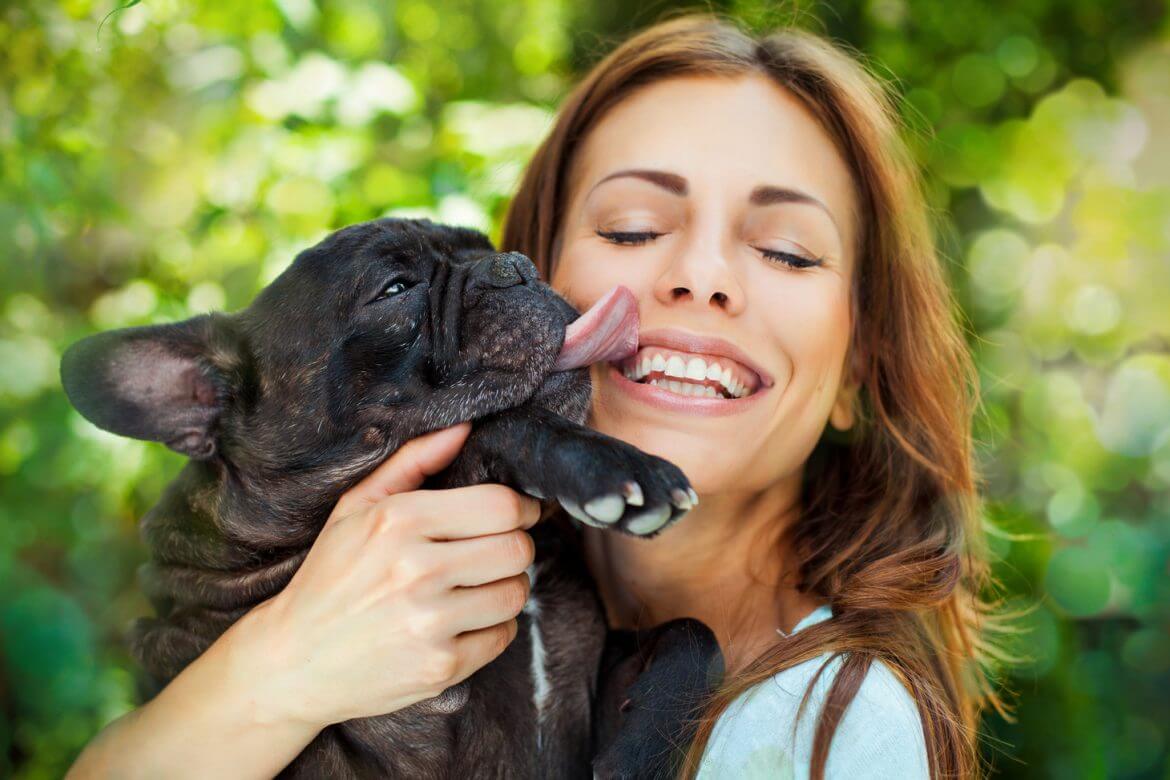Why Do Dogs Lick?
PIA Australia
July 5, 2016
For some dog owners their dog’s licking can be an embarrassing and annoying habit; while for others a lick will indicate a sign of affection. In today’s article, we take an in-depth look into why our dogs lick and what you can do if this is causing you problems.
Let’s face it… dogs lick. Some a lot more than others, some only when cleaning, and some compulsively lick their owners or anyone who will offer them a pat. To a degree, it is normal behaviour that many dogs will exhibit at some point in their life.
Dogs are creatures of habit, and many times a dog’s need to compulsively lick will come from their experience as a pup. Puppies LOVE to lick, and it can be a very cute behaviour for a wee little fluff ball. However, as they quickly learn that their licking provides more snuggles and pats, they continue this behaviour into their adult life. It’s not until then, when we are covered in drool, or worst, our guests are covered in drool, that we may start to reconsider if we want to be licked every time we pat our pet.
Dogs will also lick to clean themselves, and sometimes they are actually ‘grooming’ us. This is common from dog to dog and even from dog to owner. It’s a sign of affection and love.
Other reasons a dog may lick:
- Affection – showing you that they care.
- Communication – they are trying to tell you something or get your attention. Many assistance dogs are taught to lick to gain attention for a problem.
- Submission – a submissive dog will lick as a sign of affection and submission, “Let’s stop and just love each other”.
- Healing – an injured dog will lick a sore spot to help it heal.
- Arthritis – a dog showing symptoms of arthritis will lick at the joints compulsively.
- Sickness – licking anal glands or other areas may indicate your dog is in pain and should be checked by a vet immediately. Allergies can cause itchy paws and some dogs will lick and chew at their feet constantly to relive the itch. A compulsive licking dog should be checked by a professional for any underlying medical condition.
For more reasons on why dogs lick themselves, visit the Factual Facts website.
How to Stop Dog Licking
If your dog’s licking is not caused by medical reasons and you want to stop it, there are some simple tricks to help you do that. Most importantly do not scold your dog for licking. The behaviour gives them comfort and is probably to show you affection, so with all behaviour training: go slow and steady. It is also essential that you rule out that the licking is not due to an anxiety problem or an underlying medical condition. Compulsive lickers will need to seek professional advice to help alleviate their whole condition, through a behaviour management program and possible medication. In these cases, licking is a symptom and not a problematic or learnt behaviour.
- Ignore your dog. Stop whatever you are doing. If you are patting your dog… stop. Once the licking stops, resume your patting. This will take time, but your dog will soon learn that once they lick they will not get what they want.
- Make sure everyone in the household is on the same page. It can’t be one rule for one person. If you want to stop your dog from licking, ensure that everyone is encouraging the new ‘non-licker’ in the house.
- Use eucalypts or citrus scents on your skin.
- Look at when your dog licks you. Is it after you shower? Or after you eat? Is your dog actually licking the leftover substances from your skin? You can change your habits to help prevent the licking.
- Keep your dog correctly exercised and well trained. If your dog knows the “AH AH” command – the blanket command of basically saying NO, you can use every time your dog licks you. Stop the pat or the game, say “AH AH”. Then resume the game or pat. If the licking begins again… repeat. Repeat. Repeat.
- Use your WHOLE body to tell your dog that you are not keen on this behaviour. This means turning away, and not making eye contact or even walking out of the room. Be consistent.
A BIT ABOUT THE BLOGGER:
Nadia Crighton is a well-known and accomplished Australian Journalist and pet magazine Editor. As a busy mum of four humans, two dogs, 50 sheep, one cat, a handful of chickens and a goat named Billy (and let’s not forget the axolotls!); she simply adores pets of all shapes and sizes. These are her personal thoughts and advice from many years of pet-ownership and working within the pet industry.

8 Comment